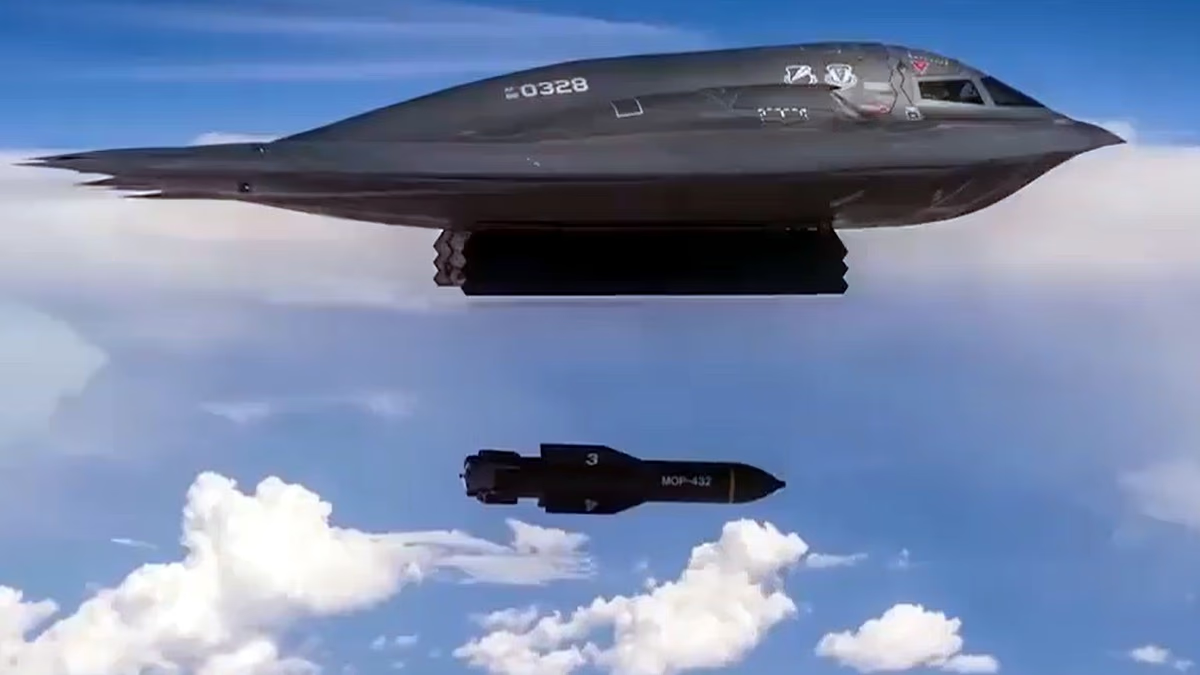On the morning of June 22, 2025, the world awoke to news of an astonishing military mission named Operation Midnight Hammer. This operation saw the US conduct precision attacks on Iran's nuclear sites at Fordow, Natanz, and Isfahan, utilizing over 125 aircraft, 7 B-2 stealth bombers, and more than 30 Tomahawk missiles.
Through sharp strategic maneuvers and decoys, the US successfully evaded Iran's defensive systems, stifling any chance of retaliation. Here is the full story of the operation detailing the arsenal and aircraft involved.
Read More:
Operation Midnight Hammer: Mission Genesis
The key objective of Operation Midnight Hammer was to disable Iran's nuclear weapon program, perceived as a growing threat to the US and Israel. Initiated on the night of June 21, 2025, the mission was orchestrated by the US Air Force and Navy in tandem.
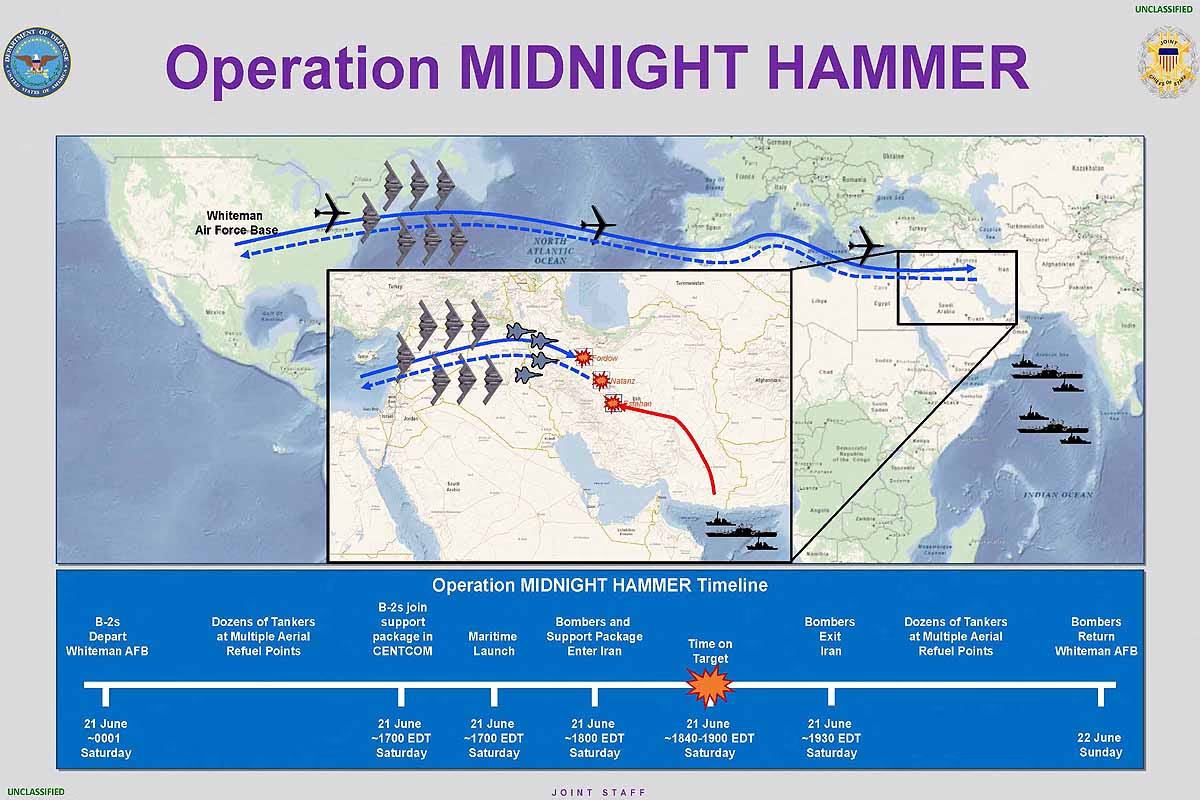
Source: aajtak
This mission was meticulously planned months in advance but kept top-secret, with only select individuals such as President Donald Trump, Secretary of Defense Pete Hegseth, and Joint Chiefs of Staff Chairman General Dan Cane in the know.
Timing: The strikes occurred between 6:40 PM and 7:05 PM (US time) on June 21, aligning with early morning hours from 2:10 to 2:35 AM in Iran.
Locations: The nuclear installations at Fordow, Natanz, and Isfahan.
Strategy: By employing decoys and minimizing communication, the US left Iran disconcerted, ensuring the operation's success by maintaining a shroud of secrecy.
How Did America Outsmart Iran?
The US employed ingenious strategies during the operation, rendering Iran's defense mechanisms ineffective...
Decoy Maneuvers:
Some B-2 bombers were intentionally directed towards the Pacific Ocean to mislead Iran into thinking the attack was coming from a different direction. These decoy flights diverted Iran’s attention towards Guam’s Andersen Air Force Base, with one B-2 plane (MYTEE 14) making an emergency landing in Hawaii.
Read More:
Minimal Communication:
During the 18-hour mission, communication was kept to a minimum, evading detection by Iran's radar and espionage systems.
Advanced Fighter Jets:
Fourth- and fifth-generation fighter jets, including the F-22 Raptor and F-35 Lightning II, led the charge ahead of the B-2 bombers. These jets neutralized Iran’s surface-to-air missile (SAM) defenses using high-speed anti-radiation missiles (HARM) to dismantle radar networks.
Amazing Results:
Iran’s S-300 Russian air defense system failed to detect the B-2 bombers, thanks to their stealth capabilities. General Dan Cane reported unchanged Iranian fighter jets and missile systems, which failed to engage or notice the mission.
Weapons and Aircraft: The Arsenal Deployed
Operation Midnight Hammer showcased the US's cutting-edge technology and weaponry. Here’s a detailed rundown of these arms and aircraft...
Read More:
1. B-2 Spirit Stealth Bomber

Source: aajtak
Seven B-2 bombers, representing the pinnacle of stealth aircraft capable of evading radar detection, were crafted by Northrop Grumman. Each B-2 can transport two GBU-57 MOP bombs, boasting a range of 11,000 kilometers, allowing for nonstop flights from Missouri to Iran.
Departing from Whiteman Air Force Base in Missouri, these aircraft embarked on an 18-hour journey, refueling mid-air numerous times, as they navigated over the Atlantic Ocean, Mediterranean Sea, Israel, Jordan, and Iraq to penetrate Iranian airspace. Staying consistent with the plan, they deployed 14 GBU-57 MOP bombs over Fordow and Natanz.
2. GBU-57 Massive Ordnance Penetrator (MOP)
These 14 bombs (12 at Fordow and 2 at Natanz) each weighed 13,600 kilograms, ranking as the most massive non-nuclear bomb in the US arsenal, capable of piercing 18 meters of concrete or 61 meters of earth, perfect for deep bunkers like Fordow.
The historical first-time deployment of these bombs, confirmed by Maxar's satellite images, revealed six major craters atop Fordow Ridge, a testament to their power.
Read More:
3. Tomahawk Land Attack Cruise Missile (TLAM)
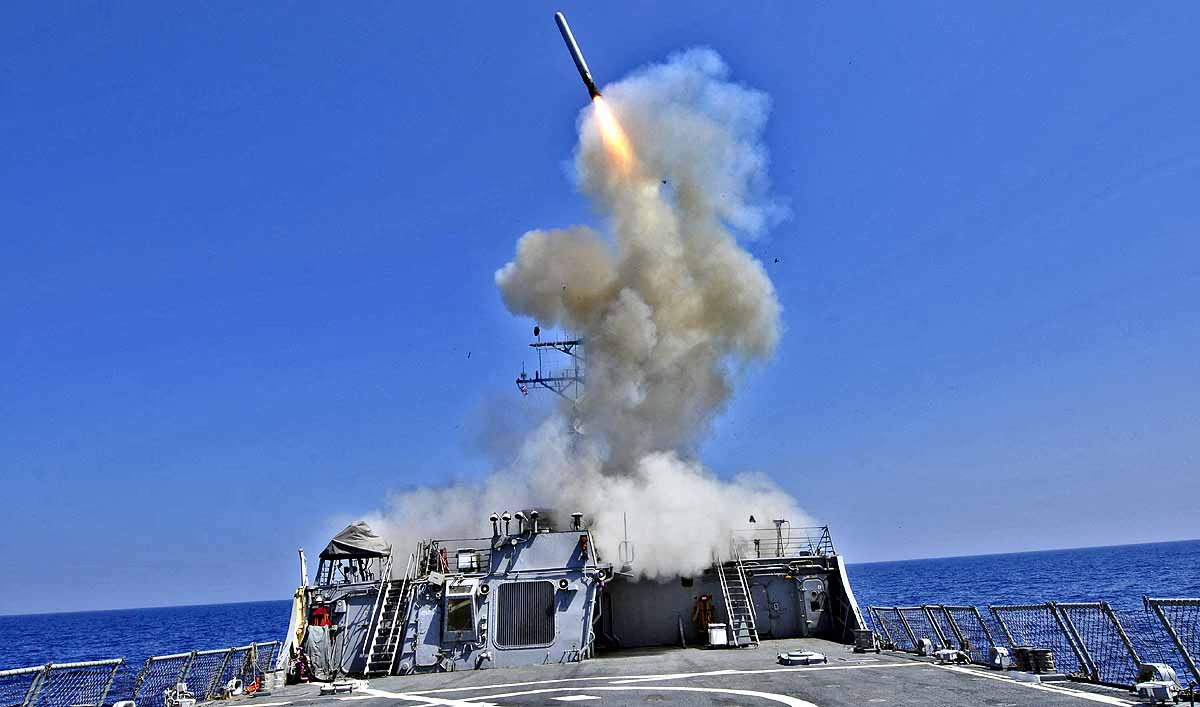
Source: aajtak
Over 30 of these missiles were launched towards Isfahan from the USS Georgia, an Ohio-class guided missile submarine. These subsonic missiles have a speed of 880 km/h, a warhead of 450 kg explosives, and guidance via GPS and terrain mapping within an inertial navigation system, effectively destroying surface structures like uranium processing plants at Isfahan.
4. Fourth- and Fifth-Generation Fighter Jets
The fleet included F-22 Raptors, F-35 Lightning IIs, and F-16 Fighting Falcons among the 125 aircraft, with exact numbers classified. These jets escorted the B-2 bombers, using HARM missiles to decimate Iranian radar and SAM systems.
Read More:
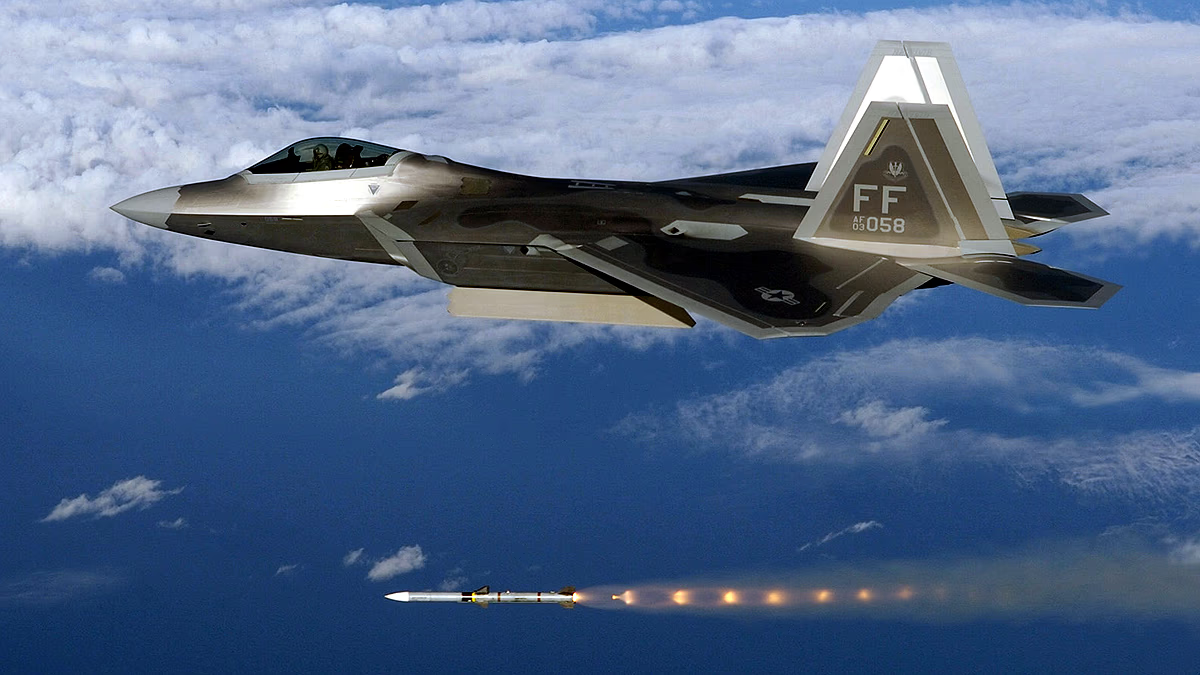
Source: aajtak
Executing decoy maneuvers and high-speed preemptive firing ensured B-2 safety. The F-22 and F-35's stealth capabilities allowed them to evade radar detection.
5. Additional Aircraft
KC-46 Pegasus and KC-135 Stratotanker:
A fleet of tanker aircraft facilitated mid-air refueling multiple times during the 11,000 km flight.
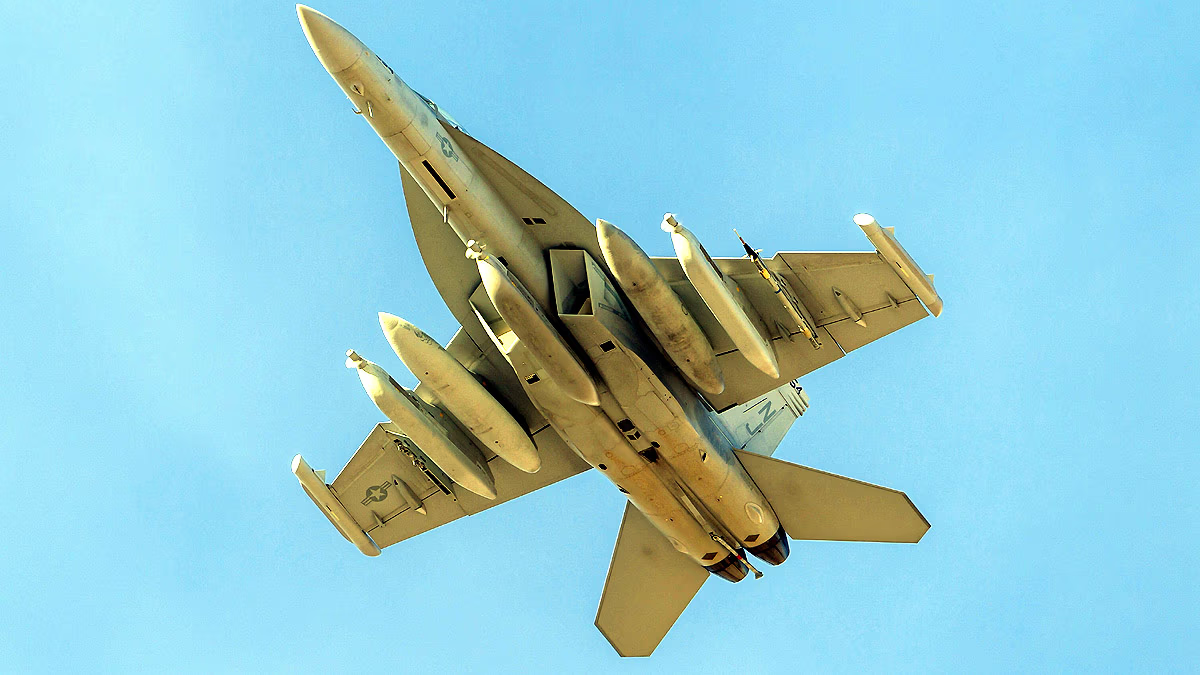
Source: aajtak
ISR (Intelligence, Surveillance, and Reconnaissance) Aircraft:
Potential models include RC-135 Rivet Joint, P-8 Poseidon, U-2 Dragon Lady, and MQ-4C Triton, monitoring Iranian activity and providing real-time intelligence.
EA-18G Growler (Potential Usage):
Employed for jamming radar systems in electronic warfare.
6. Total Armaments
75 precision-guided munitions, 14 GBU-57 MOPs (deployed at Fordow and Natanz), and over 30 Tomahawk missiles (targeted at Isfahan). An additional 31-37 armaments (including HARM missiles) were deployed by fighter jets to dismantle radar and SAM systems.
Read More:
Timing and Phases of the Operation
Beginning (June 21, 12:00 AM US Time):
Seven B-2 bombers took off from Whiteman Air Force Base, with some decoy aircraft directed towards the Pacific Ocean, following an extensive 18-hour flight over the Atlantic, Mediterranean, and Middle East regions.
5:00 PM (US Time):
The USS Georgia launched over 30 Tomahawk missiles at Isfahan, striking right after the B-2 bombers had cleared the area to maintain surprise.
6:40 PM (US Time, 2:10 AM Iran Time):
The lead B-2 dropped two GBU-57 MOP bombs on Fordow, with the remainder targeting both Fordow and Natanz. Fighter jets dismantled radar and SAM systems with precision missiles.
7:05 PM (US Time):
All strikes were completed with planes exiting Iranian airspace safely. The Tomahawk missile attacks at Isfahan were the concluding strikes.
Read More:
Why Was This Operation Historic?
Largest B-2 Mission:
This marked the most extensive B-2 operation in US history, second only in duration to the mission after 9/11.
First Use of MOP:
The debut of the GBU-57 MOP bombs in combat.
Element of Surprise:
Completely outmaneuvering Iran's defense systems.
Coordination of 125 Aircraft:
A scale of operation only the US could manage globally.
